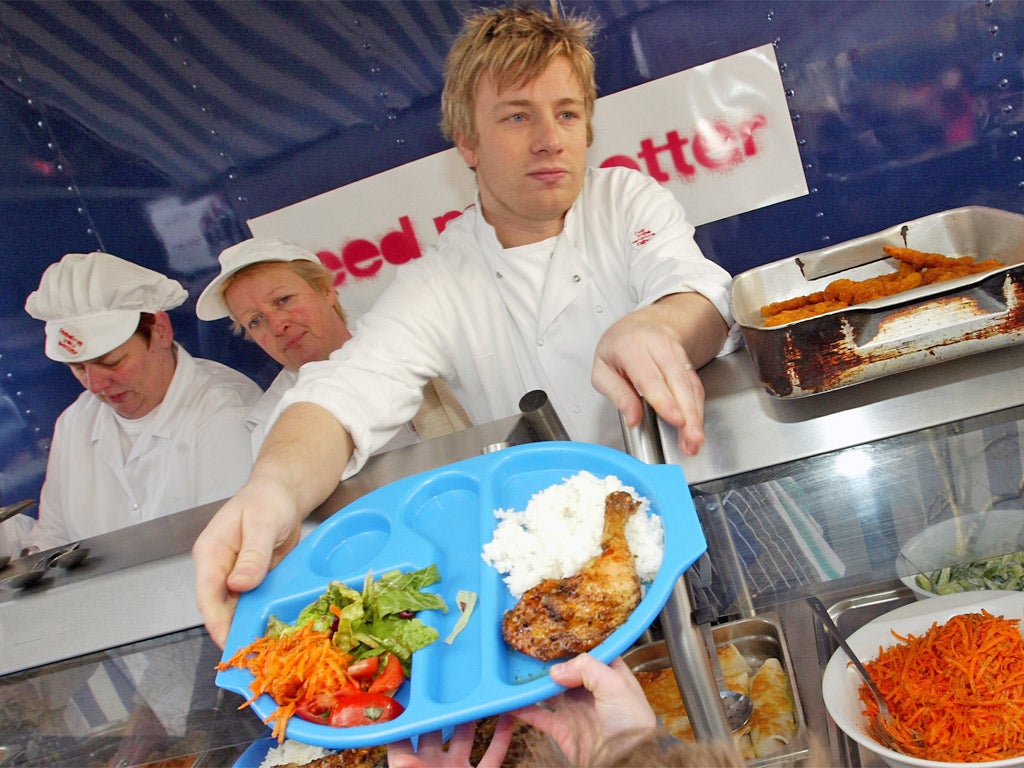Dinner ladies told to take on the takeaways with cut-price deals

The school meals service was launched some decades after Charles Dickens put the words "Please, sir, I want some more" into Oliver Twist's mouth.
Now satisfying the appetite of children is a lot more complicated with two-for-one deals and cut-price meals serving as the latest attempt to win children from the lure of the local takeaway and back into the school canteen.
New reforms proposed by the Government will allow such meal deals to be offered to targeted groups of pupils to try and ensure they enjoy a healthy meal instead of adding to the country's obesity problems.
The catalyst for a new shake-up of the service to be introduced in the new year has been an increase in the number of takeaway shops opening up near to school gates in a bid to prise pupils out of school at lunchtime with eye-catching cheap deals.
As a result, ministers are relaxing regulations which insist each school charges all of their pupils a flat rate for their dinners. They hope, particularly, that the move will persuade schools to cut the price of dinners for children in the first year of secondary schooling.
Latest figures on the take-up of school meals show a 6.5 percentage point decline between the last year of primary and first year of secondary schooling.
Another suggestion is offering a reduced price for second children to help parents meet the cost of school dinners.
The Children's minister Sarah Teather said: "These new powers are an important step in tackling childhood obesity and will mean schools can help hard-pressed families." Under the present arrangements, schools can only vary the price of their dinners if they individually appeal to the Secretary of State for Education to do so.
The spotlight was turned on school meals following Jamie Oliver's campaign through his Channel 4 series. It led to the then government reintroducing minimum nutritional standards.
At first, though, the shake-up led to a drop in take-up and mothers handing their children burgers and chips through the school railings. Others pupils deserted their schools at lunchtime to visit their local takeaways.
However, in the past two years, it appeared that the TV chef's campaign was gaining momentum as the numbers eating school meals rose. According to the latest figures, the take-up of school lunches now stands at 44.1 per cent in primary schools (compared to 41.4 per cent in 2009-10) and 37.6 per cent in secondaries (compared to 35.8 per cent).
Judy Hargadon, chief executive of the School Food Trust, said: "When children eat better, they do better – which is why we want to see more children able to have a healthy school meal every day and why it's in the interests of schools to do everything they can to boost take-up."
Examples of cut-price deals already offered include five days of free lunches for children starting reception classes in schools in Gateshead, Tyne and Wear, and Ealing, west London.
"Already we've seen some great examples of pioneering schools keen to offer special deals," said Ms Teather. "Now others across the country will be able to follow suit."
History lesson: Soggy semolina and beyond
* The first school meals were offered in 1870 when a number of schools offered breakfast and dinner for the poorest children. Breakfast consisted of porridge with milk and treacle followed by bread with margarine or dripping. Dinner was typically gruel followed by an apple.
* It was not until 1944 with the R A Butler Education Act that it became compulsory for all schools to provide dinners with an agreed nutritional content.
* In 1980 Margaret Thatcher ended minimum nutritional standards and removed the obligation to provide meals. Several authorities abolished the dinner service altogether – providing packed lunches for those entitled to free school meals.
* In 1997, Labour pledged to get schools to open for extended hours – bringing back school breakfasts for children from the poorest families.
* In 2004, TV chef Jamie Oliver launched a campaign to improve school dinners through his Channel 4 series, Jamie's School Dinners. This led Labour to restore minimum nutritional standards for all, meaning deep fried foods were only served twice a week and sweet fizzy drinks were outlawed. Schools were also urged to discourage parents supplying their children with packed lunches – a survey showed only one per cent of these reached the minimum required standard. Schools themselves introduced a range of measures to remove the need for pupils to bring dinner money to school and fall prey to school bullies. Some introduced fingerprinting for pupils as a method of triggering payment, others introduced a swipe card system.
* 2012 and the Coalition Government relaxes restrictions on charging for meals to allow schools to offer cut-price deals to woo their pupils back from takeaways.
Join our commenting forum
Join thought-provoking conversations, follow other Independent readers and see their replies
Comments